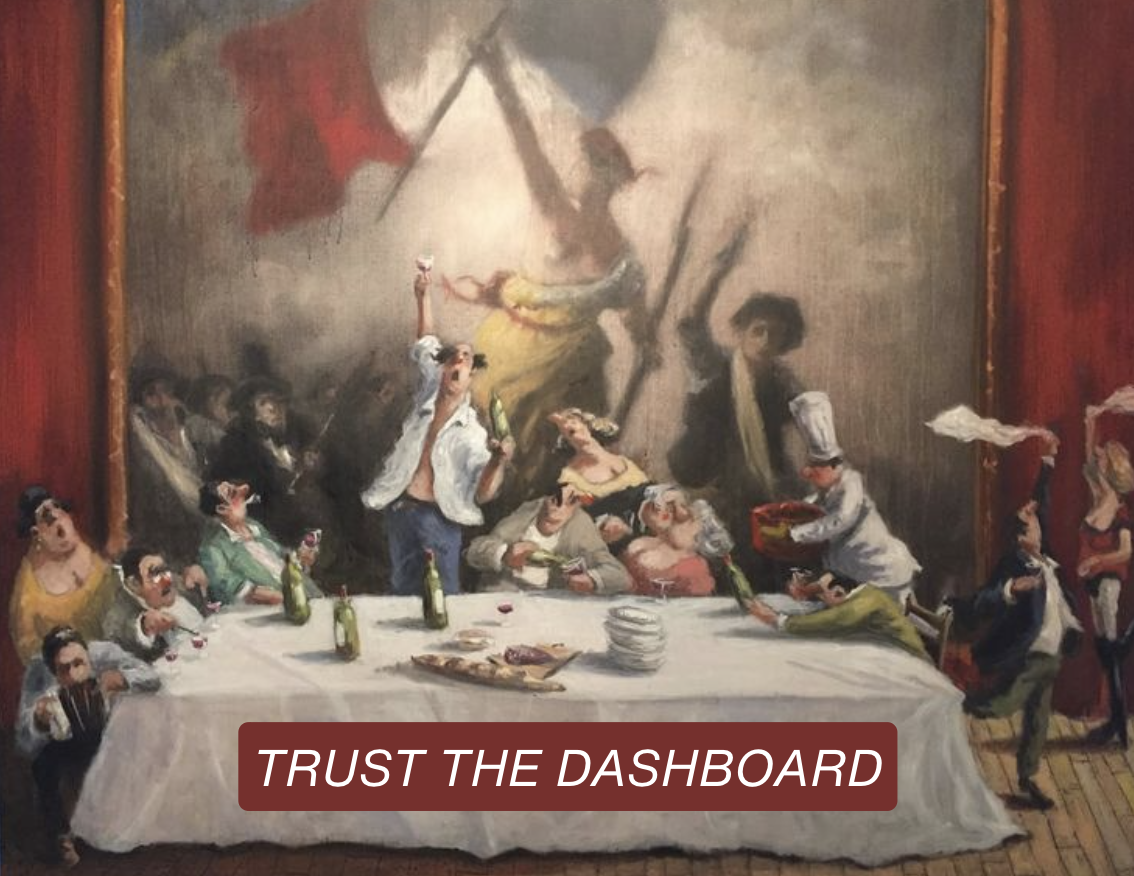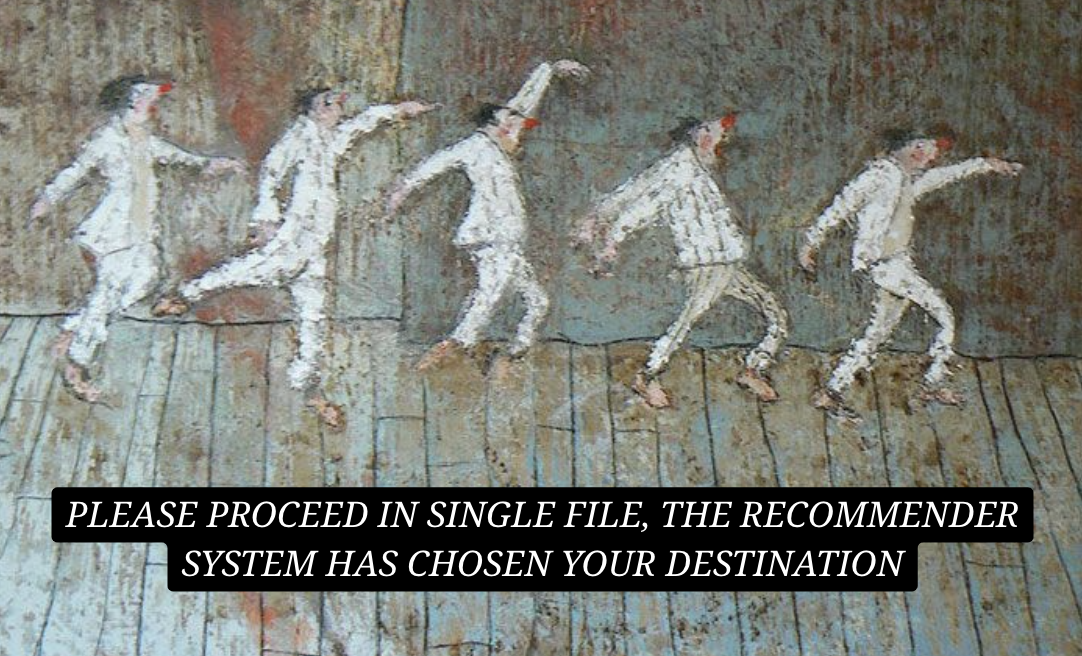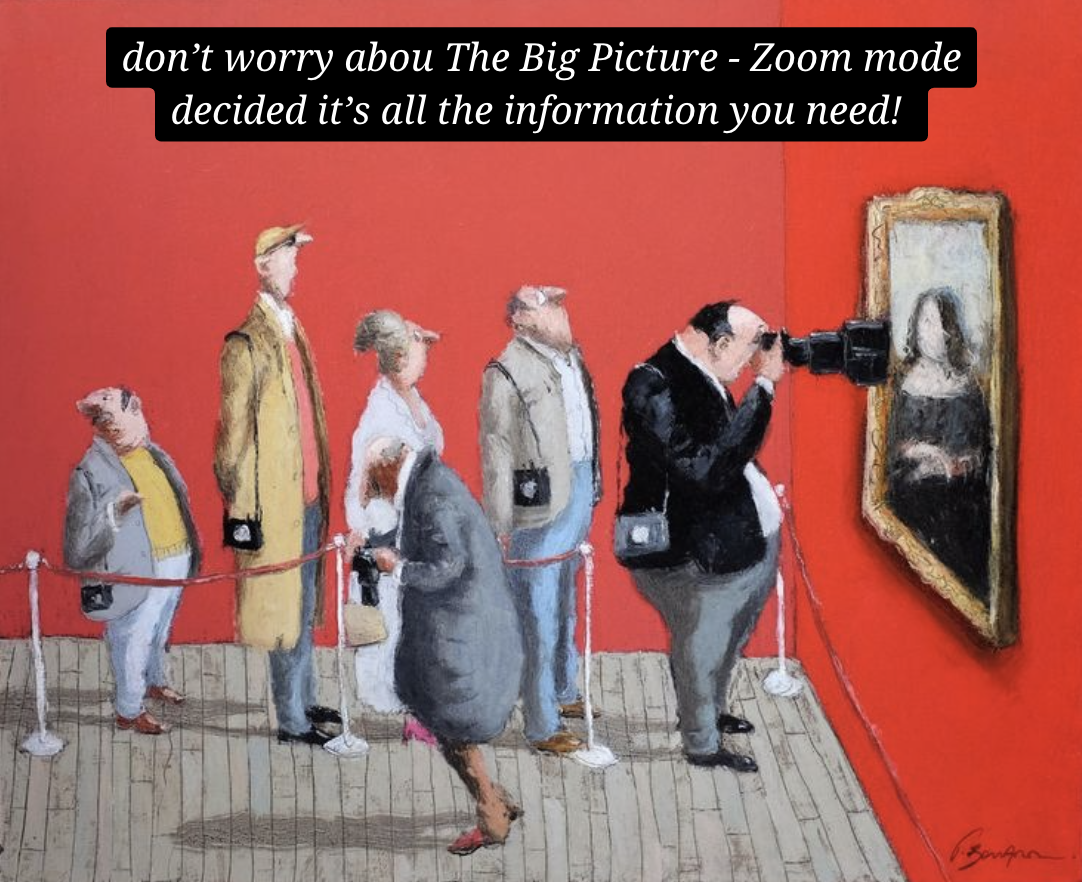Inspired by real life events:
There are business meetings, and then there are Meetings-with-a-capital-M, the kind where bullish CEOs swap trade secrets with state leaders who wear optimism the way magpies wear other people’s jewelery, and princes who measure personal growth in cruise missiles per annum.¹
That, more or less, is the crowd lining up to license, bankroll, and otherwise hitch their fortunes to the latest large-language models.
Tech marketing loves to paint itself as a force for universal good, but a hammer is still a hammer; in good hands it builds a cottage, otherwise it builds a cage.
Why the grand timing matters
-
Public trust crumbling, - fewer than four in ten citizens say they believe their national government will “do the right thing”. AI can be marked as a data driven “neutral” referee, handy when public is distrustful of governments and the news.
-
Economic volatility and climate shocks, - pushing more agencies to adopt forecasting models, showing off their confident decision making.
-
More businesses adopt AI to keep running with less human staff.
-
Regulations are still catching up, - AI models can be dropped quickly and have their own rulebooks (hint - it will be written in their favor).
Let’s take a look at the AI in this mess: calm, corporate, and wearing the smug smile of someone who passed every exam because it secretly set the questions.
Its purpose isn’t to set anyone free; it’s to seal the existing power structure in place so any mess can be wiped away without changing a thing.

Once you blend those four trends together, you have a disaster soufflé that rises every time the oven door opens. Distrust invites leaders to hide behind “objective” dashboards; volatility lets them blame the dashboard when things go wrong; labour shortages means nobody’s left to question the dashboard in the first place; and sluggish regulators arrive just in time to rubber-stamp whatever the dashboard already decided.
That isn’t progress, it’s power in concentrate, poured into every crack until the whole system sets rock-hard around whoever grabbed the handle first.
- Bad, bad, BAD.
The hardware reality
You see, AI runs on infrastructure, the sort built from data-centres, GPUs, and enough electricity to re-animate a cathedral. Police departments, intelligence agencies, nation states usually have this technology, and the public generally does not.
🎡 Economic fallout
Meanwhile your job description is being rewritten in real time, well, mostly in the past tense. Purchasing power shrivels, voices shrink, and the public square is paved over to make room for a Terms-of-Service update.
🎡 Culture shift (or full stop?)
People move from CREATING to consuming Slop™, that endless, auto-generated sludge of articles, clips and images that quietly decides what matters. The recommender system does the sorting; you just keep scrolling.
🎡 Social Osteoporosis
Students no longer swap raised eyebrows with teachers; they consult ChatGPT, who never smirks and always knows the bell-curve.²
Call it - social osteoporosis -where the connective tissue of daily life thins and flakes away under a steady diet of algorithmic substitutes. A few early symptoms:
-
Office camaraderie, - Google Meet AI summary may make your workflow more productive, but it eliminates convos with your colleagues, which may birth new ideas, connections and laughs.
-
Dating & friendship, - swiping based on algorithm, optimizing for clicks and engagement, but not for messy stories narrated at weddings.
-
Music discovery, - personalized playlist every Monday? Yay, let’s stay in our lanes and not discover an underground artist, or something new about your taste.
-
Mental check-ins, - who needs late night friend phone calls, when ChatGPT can greet you with canned empathy!
Left unchecked, those tiny fractures add up. Bones still hold the body together; human exchanges still hold society together, until we outsource enough of them and wonder why everything feels brittle.

And behind the curtain?
The real peril is the quiet swapping of relationships for machinery whose answers ultimately route to a single billing address. Whoever owns the Box owns:
Information. Money. Healthcare. Borders.
Your loan approval, your biopsy queue, your vocabulary of outrage.
Investors aren’t pouring billions into AI only for quarterly profits; they’re buying a stabilizer to use when the climate worsens, markets lurch, or streets fill with demonstrations. It’s the ultimate blueprint for control.
Gunpowder made the bow and arrow obsolete.
AI might do the same to dissent.

What individuals can do:
-
Learn and ask humans questions: A Crash Course in AI Disruption, Privacy 101, WTF is GDPR and Why Should I Care.
-
Run smaller models locally so your data stays on your machine.
-
Support open-source projects, like web3privacy now.
-
Treat privacy like hygiene: change settings often, share sparingly. Insist on it.
-
Back builders who show, rather than just claim, social value.

AI is powerful. It is useful. But in the wrong hands, it’s not a revolution.
It’s a lock, disguised as a door.
¹ He does do TED Talks, technically. The T stands for “tank,” the E for “escalation,” and the D is classified.
² It also never forgets; ask any plagiarist who assumed otherwise.
Header and paintings by Thomas Bossard.